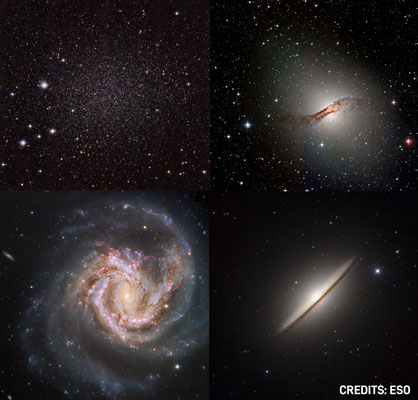Abundance gradients to trace galaxy formation and evolution
LOCATION: Sport & Kurhotel at Bad Moos - Via Val Fiscalina 27, 39030, Sexten
DETAILS
Abundance gradients in galaxies are fundamental tools to investigate the physical mechanisms driving the formation and evolution of galaxies. They have been widely used to constrain whether galaxies formed inside-out (e.g. the disks of spirals) or outside-in (e.g. elliptical galaxies). More recently they have been used to investigate either the dual nature of the Galactic Halo (in situ versus accreted) or the occurrence of a warp in the outer regions of the Galactic thin disc. Abundance gradients, indeed, strongly depend on the gas infall and outflow rates, on the star formation laws and on the adopted stellar tracers. The use of high resolution spectrographs at the 8-10m class telescopes provided the opportunity to measure abundance gradients across a significant portion of the Galactic spheroid. The use of Integral Field Spectrographs (IFS) opened a new path in the analysis of abundance gradients in external galaxies and brought forward a complex empirical scenario (gradient inversion, clumpy distributions) for which we still lack a comprehensive theoretical framework. This meeting is very timely, because in a few years new and accurate abundance measurements are going to become available not only for the Milky Way thanks to past and ongoing spectroscopic Galactic surveys, such as Gaia-ESO, APOGEE, WEAVE, GALAH, 4MOST), but also for nearby stellar systems (MOONS, MAVIS).
The same outcome applies to the abundance gradients that are going to be measured in early and in late type galaxies by taking advantage of IFS assisted by Adaptive Optics such as ERIS at VLT.
The topics and the questions we would like to answer in this workshop are the following:
–Observed chemical abundances and abundance gradients in the MW and in local group galaxies. Where is the transition between inner and outer halo? What is the nature of the warp in the Galactic thin disc?
–Observed gradients in high redshift galaxies. Is the gradient inversion age dependent? Is the gradient inversion typical of barred galaxies?
–Stellar Nucleosynthesis.
–Galactic chemical and dynamical evolution models.
–Cosmological simulations for galaxy formation and evolution. Is the total mass of the galaxy the only parameter affecting the metallicity gradient?
with the support by INAF – Osservatorio Astronomico di Trieste
RELATED FILES
FEE
350 Eur // Please note: All payments (bus and conference fees) will be accepted only one week before the workshop starting date
WORKSHOP CODE FOR PAYMENT
AGRA22
ORGANIZERS
Giuseppe Bono Gabriele Cescutti Francesca Matteucci

